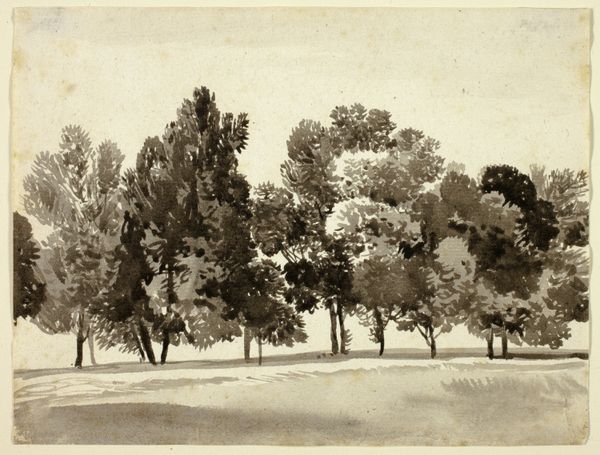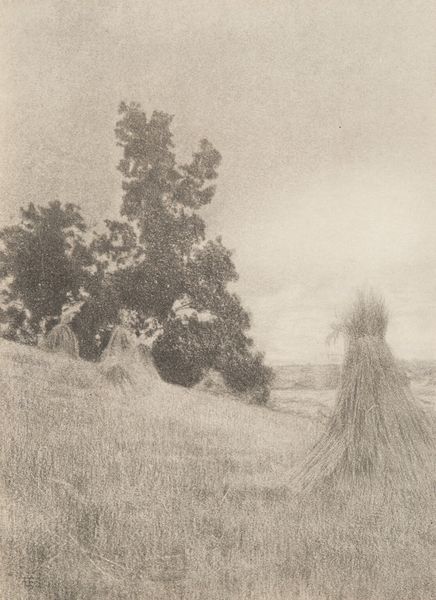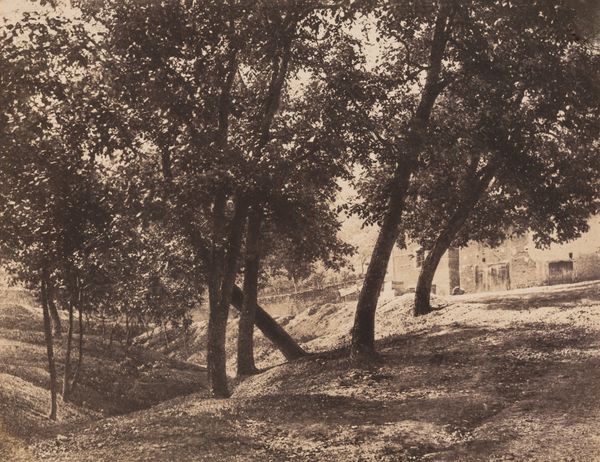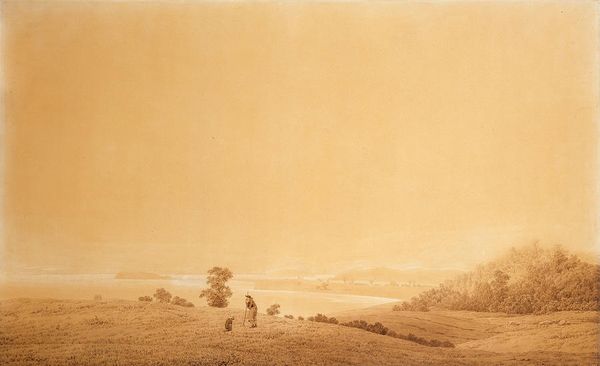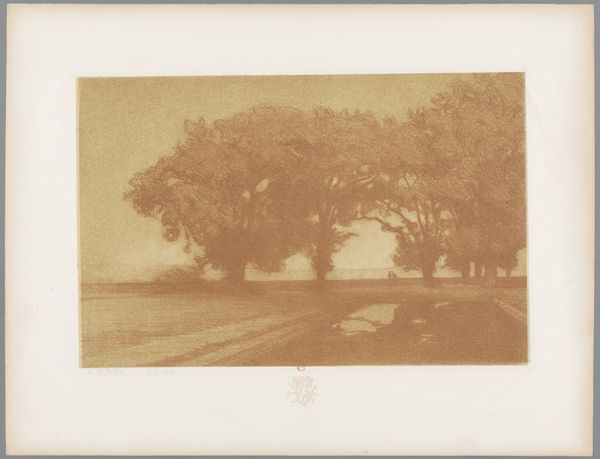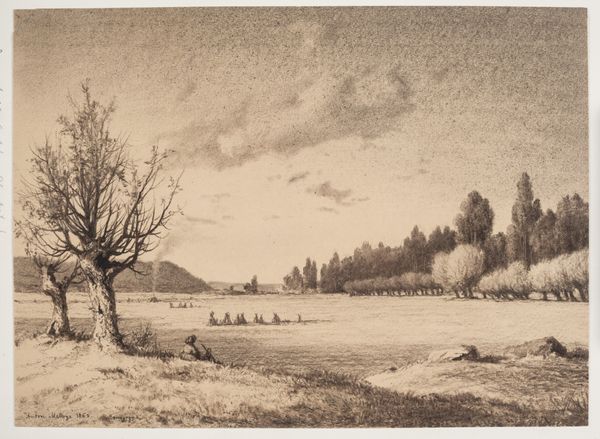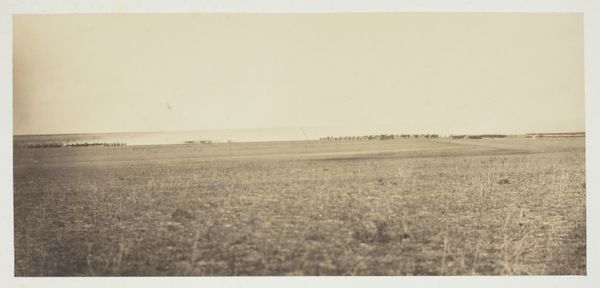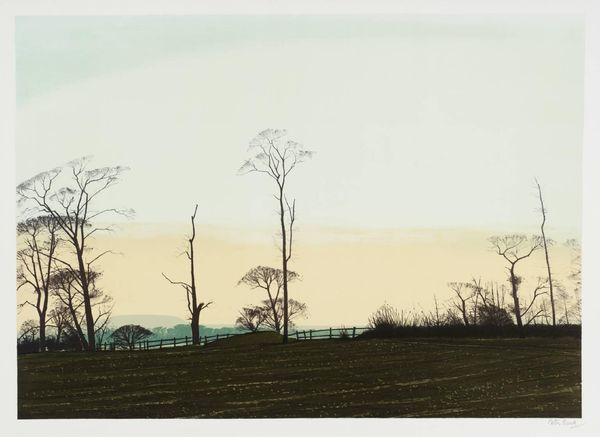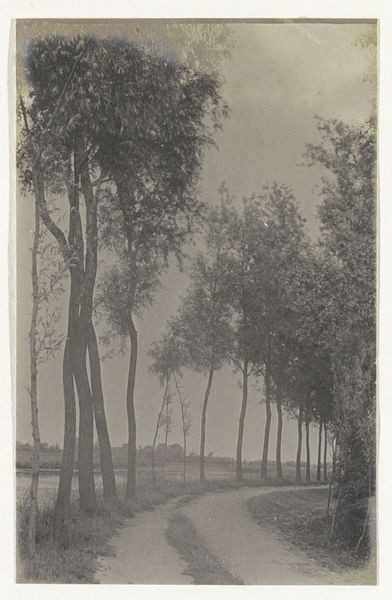
Dimensions: 269 mm (height) x 380 mm (width) (plademaal)
Editor: So, here we have Peter Ilsted’s "Landskab fra Falster," made in 1930. It’s an etching and mezzotint, and what strikes me is the solitude in the muted tones and the windswept trees. It almost feels like a commentary on the isolated rural experience. What do you see in this piece? Curator: That feeling of solitude is powerful, isn't it? But let’s push past the immediate aesthetic. What does it mean for an artist like Ilsted, working in this period, to turn their gaze to the rural landscape? Considering the broader socio-political context, Denmark was undergoing significant shifts in the early 20th century. How might this quiet landscape engage with broader questions of national identity and belonging? Editor: Hmm, that's interesting. I hadn't thought about it like that. I guess I was just seeing it as a pretty picture. Maybe the isolation reflects a separation from a rapidly modernizing urban center? A resistance, perhaps? Curator: Exactly. The choice of Falster as a subject is deliberate. Rural landscapes often become sites of cultural memory and imagined community. Consider how this imagery might contrast with, or even critique, the dominant narratives of progress and industrialization often celebrated in urban spaces. What power structures are being implicitly challenged or reinforced by focusing on this quiet, almost melancholic, scene? Editor: I see your point. It's not just about the beautiful etching technique, it's about what the landscape represents culturally and politically. So, the artist is not merely depicting a scene, but engaging with larger discourses of identity and progress through his choice of subject matter and artistic style? Curator: Precisely. The "pretty picture" opens up to reveal deeper layers of meaning, engaging with questions of national identity and challenging the dominant narratives of its time. It encourages us to think critically about the intersection of art, identity, and social change. Editor: Wow, I will definitely be thinking about landscapes differently now! Thank you for opening my eyes to those contexts. Curator: My pleasure. It is important to be able to reflect on those connections.
Comments
No comments
Be the first to comment and join the conversation on the ultimate creative platform.
